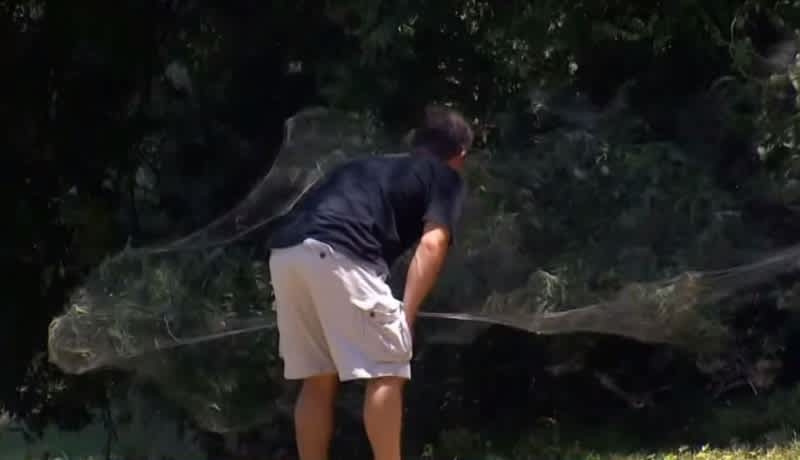Visitors Shocked by Massive Spider Web Covering Texas Park
OutdoorHub Reporters 08.14.15

A single, massive communal spider web now stretches for about a quarter of a mile across a town park in Rowlett, Texas.
To an arachnophobe, it’s a nightmare come to life. To other park visitors, it’s a source of amazement and wonder.
What made the giant spider web that is now draped over the park’s trees? Is it the product of one monstrous spider? Experts say the web is actually a naturally occurring phenomenon caused by the gathering of members of one specific family of spiders, the long-jawed Tetragnathidae.
“I’ve never seen anything like this,” Barry Clinger, who brought his grandchildren to view the spectacle, told WFAA. “I think it’s just amazing.”
You can see a video of the web below:
The web stretches from tree to tree and is filled with a veritable buffet of captured insects. Visitors can occasionally see one of the web’s architects scuttle across their creations, perhaps looking for more food.
Experts with the Texas A&M AgriLife Extension Service say the spiders pose no threat to passing humans.
“These types of spiders are unusual in that they are not aggressive to other spiders of the same species on the same web,” said urban entomologist Mike Merchant in a press release. “They also are not known to bite or be harmful to humans.”
Instead, long-jawed spiders actually work together to build communal webs. While they are not generally so large, at least one other park has been covered in a giant spider web in recent history. In 2007, Lake Tawakoni State Park, about only 30 miles away from Rowlett, was also taken over by an army of spiders. Those spiders were determined to be long-jawed orbweavers, and although the spiders at Rowlett have not yet been conclusively identified, experts say it is likely a similar species.
“Someone stepping off the road for a closer look will see thousands of lanky spiders darting among the webs that extend up to 40 feet into the trees,” Merchant said. “There is a surreal quality to the extensive webbing covering these trees.”
What drove thousands of spiders to this specific spot? It might have something to do with the overabundance of the food in the area. Large communal webs net more prey than individual webs, so the phenomenon is a result of opportunistic spiders banding together to eat as much as they can. Experts are unsure exactly how long the web will last, but they advise city officials against spraying insecticides to get rid of it. Instead, they say it can be viewed as a work of art.
“Insecticides or other treatments are really unnecessary as this spider is essentially harmless and, although the communal nest may look spooky, they too are basically benign and are a sight more to be appreciated than feared,” Merchant said.

